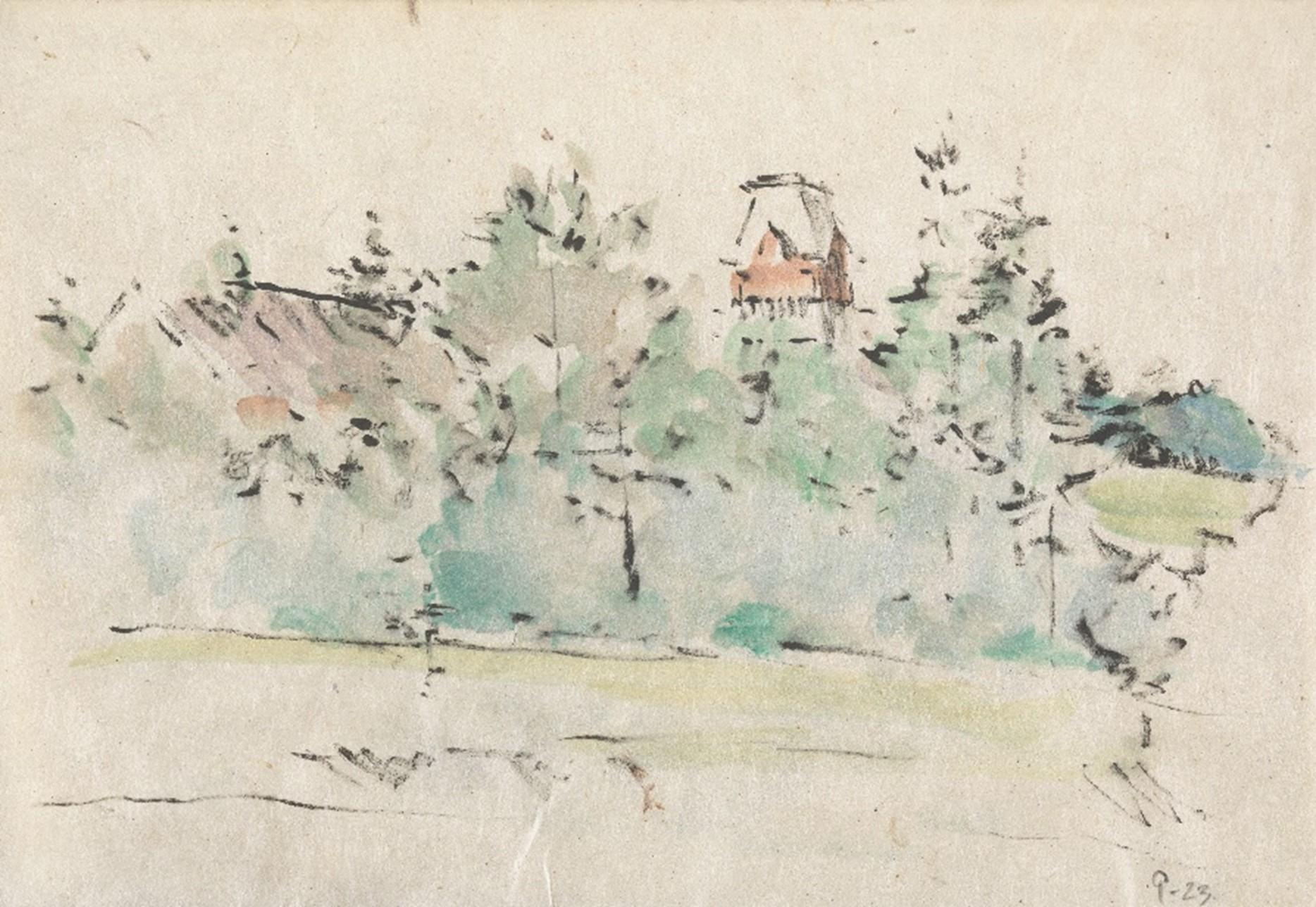

As a third-year MFA candidate in Printmaking and a Graduate Assistant for the Frederick and Kazuko Harris Fine Arts Library , I interact frequently with and take inspiration from the library’s collections. My work in the library prompted me to discover the works of the Fine Arts Library’s namesake, Frederick Harris, and subsequently to curate the exhibit Travels (To Athens) With a Brush, currently on view on the third floor of Alden Library and online .
I first encountered Frederick Harris’s work while visiting the Library Annex on Columbus Road in Athens, where Harris’s collection of created and collected art objects is located. There, sketchbooks he used throughout his life were made available for me to view. Harris’s sketchbooks are 5” x 7” Japanese handbound books. As a prolific landscape artist, Harris always kept these sketchbooks with him, ready to use at a moment's notice. In doing so, they became an extension of his daily life. Sketchbooks are by nature very intimate art objects, held by the artist constantly and taken wherever they go.
The works within his sketchbooks are small, expressive, and gestural paintings: cascading brushstrokes against gentle washes of color. The paintings often contain landscapes, architecture, or figures. Harris used his sketchbooks primarily for observation. These paintings were done Plein Air, a French term meaning 'open air' that refers to the style of observational painting done outdoors. This art practice requires artists to be present in the landscape while rendering it. Artists like Harris who work Plein Air develop skills and utilize tools that are unique to the practice.
The textures and linework he accomplished were thanks to his knowledge of Sumi-e: a form of Japanese ink-wash painting . This style is known for its gestural line work and range of value in ink washes. The cascading line and texture that develops within Sumi-e leave viewers with the impression of a moment or memory. Frederick Harris’s paintings are not exact replicas of the place itself; instead, he captures the spirit of the moment and location.
Looking through his artwork, I came across images that felt familiar. The sketchbook was filled with paintings featuring locations around Ohio University from Harris’s time spent as a visiting faculty member in the School of Art + Design. These works provided an element of play and wonder by viewing the paintings and deciphering their exact locations. I found myself saying “Wait! I know exactly where this is!” I started to notice new connections between the artwork and where I live. When I was biking home that day, I realized I was retracing Harris’s steps: viewing the exact angle of the Hockhocking Adena Bikeway that he painted. These works offered new perspectives on the places I walked by every day. In preparing this exhibit, I continued to retrace Harris's steps. In doing so I gained a deeper appreciation of the Plein Air process Harris used. This process allows the artist and the viewer to connect deeply with the subject matter.
While preparing this exhibit I was simultaneously teaching Description and Drawing for Foundations students in the School of Art + Design. Harris’s work inspired me to take my students out of the classroom and onto College Green to educate them on gestural ink wash and Plein Air painting. I find the practice of Plein Air painting and expressive line not only foundational methods of artmaking, but necessary practices in being present. The artist becomes more aware and attentive to their surroundings through the process of observational artwork. I wanted to teach my students to absorb moments and imbue their works with the spirit of a place, like Frederick Harris did.
In developing this exhibit, I hope to connect the broader OHIO community to Harris’s collection and encourage them to stop, observe their surroundings, and take inspiration from them.
